
Wiki / KenWilber
Inhaltsverzeichnis: (verbergen)
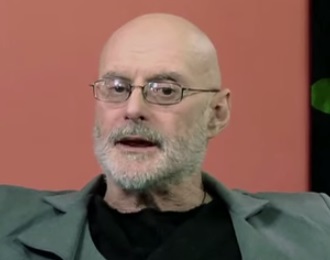
Ken Wilber
|
⚡ Wilberianischer Integralismus |
|
► Die Grenze zwischen dem Ich und den anderen ist der Schrecken des Lebens.
► Die Grenze zwischen Sein und Nichtsein ist der Schrecken des Sterbens.
Die Entdeckung des Höchsten Ganzen ist das wirksame Mittel zur Aufhebung von Unfreiheit und die einzige medizinische Verordnung, die Mystiker anbieten.
Das ichhafte Selbstbewusstsein befindet sich auf halbem Wege zwischen dem Unbewussten der Natur und dem Überbewussten des GEISTES. Das Unbewusste von Materie und Körper weicht dem seiner selbst Bewussten des Verstandes und des Egos, das seinerseits dem Überbewussten der Seele und des GEISTES Platz macht.
Die Grenze zwischen dem Ich und dem Mitmenschen löst Furcht aus, die Grenze zwischen dem Vergangenen und der Zukunft verursacht Ängste, die Grenze zwischen Subjekt und Objekt löst Begierden aus. Während die Biologie nicht zerstört werden kann, lassen sich Grenzen überschreiten.
Wenn das Ich-Empfinden stirbt, ist das, was sich auflöst, kein wirkliches Sein, sondern lediglich eine Grenze, die nicht wirklich bestand, die stets eingebildet war. Hat jedoch ein Mensch die Illusion des Ichs und dessen Grenzen aufgebaut, so fürchtet er nichts mehr als dessen Auflösung und strebt daher nach symbolischer Unsterblichkeit. |
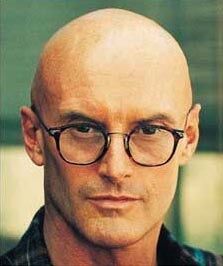 Ken Wilber Ken Wilber gilt als Ganzheitsphilosoph. Er wurde als Vordenker des
|
|
AQAL-Modell
Das AQAL-Modell [Alle Quadranten, alle Ebenen] ist eine vollständige Landkarte der Wirklichkeit.
|
|
Kosmologie des AQAL-Modells
Kosmologie des AQAL-Modells. Es besteht aus vier Quadranten:
Sie beziehen sich auf relative Ganzheiten oder so genannte "Holons" [Begriff, den Arthur Koestler geprägt hat]. |
|
Zustände
Zustände ist ein Kurzwort für vier Arten von "Bewusstseinszuständen".
|
|
Typen
Typen sind unterschiedliche Ausdrucksweisen, in denen man existieren und auf jeder Ebene oder Entwicklungsstufe agieren kann:
|
|
Linien
Linien (auch Ströme genannt) sind verschiedene Dimensionen und Fähigkeiten des Selbst, die inneren Wachstumsebenen zu überspannen. Es gibt zwei Hauptkategorien von Linien:
Die selbstbezogenen Linien betreffen den Selbstsinn (Wer bin ich?), Verhaltensregeln (Wie soll ich mit anderen umgehen?) und Bedürfnisse (Was brauche ich?). Diese Linien verlaufen nah beieinander durch viele Seinsebenen und sind stark auf die eigene Identität bezogen. Talente oder Fähigkeiten sind musikalische, kinesthetische und künstlerische Linien, die sich eigenständig von den selbstbezogenen Linien und den anderen Talentlinien entwickeln. |
|
Acht Ebenen
Die acht Ebenen oder Wellen beziehen sich auf die zunehmenden Ordnungen der Kompetenz und Komplexität in jeder beliebigen Linie oder Strom. |
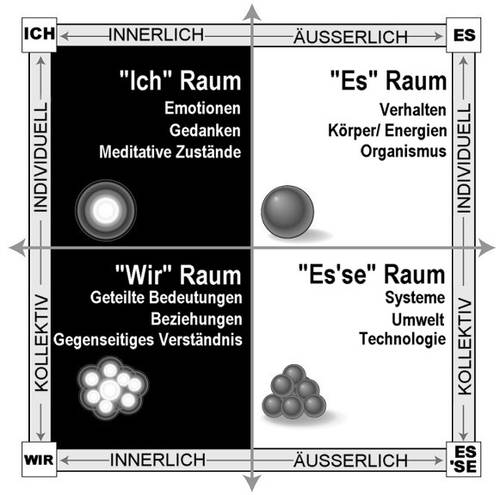
| |||||||||||||||||||||||||||||||||||||||||||||||||||||||||||||||||||||||||||||||
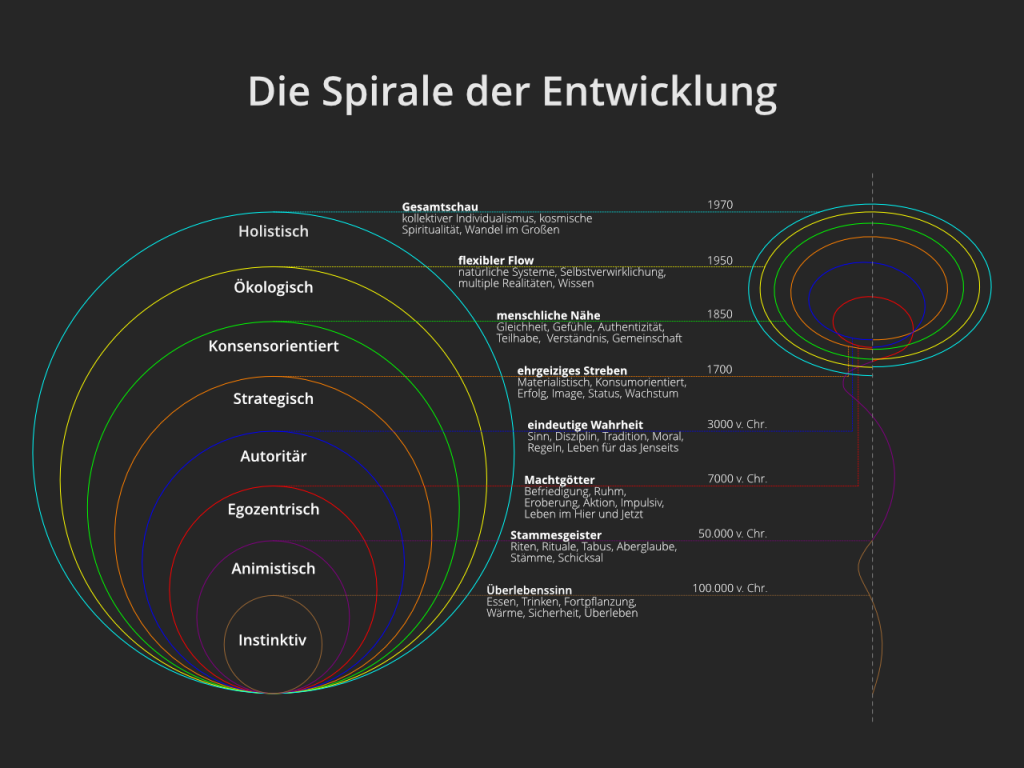 Die Spirale der Entwicklung |
| Referenz: de.Wikipedia-Eintrag ► Spiral Dynamics |
|
| ||||||||||||||||||||||||||||||||||||||||||||||
| Inspiriert durch: ► Artikel (engl.) Stages and states of consciousness von Corey W. deVos, US-amerikanischer Webseitenverwalter von Integral Life, Cheflektor von KenWilber.com, Schriftsteller |
| ||||||||||||||||||||||||||||||||||||||||||||||||||||||||||||||||||||||||||||||||
| Daten teilweise entnommen aus: ► Gelöschte Integral Institute-Tabelle Levels of Consciousness [Piaget/Aurobindo ✣ Graves ✣ Kegan ✣ Loevinger/Cook-Greuter ✣ Gebser ✣ Fowler] |
| Siehe auch: ► Stufenmodelle |
| See also: ► Step models |
| ||||||||||||||||||||||||||||||||||||||||||||||||||||||||||||||||||||||||||||||||||
| See also: ► Passage from force driven controlling ego → self → power dwelling Self |
| |||||||||||||||||||||||||||||||||||||||||||||||||||||||||||||||||||||||||||||||||||||||||||||||||||||||||||||||||
| Quelle (engl.): ► Audiovortrag vor den Studenten der John F. Kennedy University von ⚡ Ken Wilber (*1949) US-amerikanischer mystischer Philosoph, Vordenker des 3. Jahrtausends, transpersonaler Bewusstseinsforscher, Entwickler der Integralen Theorie, Autor, Integral Education, präsentiert von der Publikation Integral Life, 49 Minuten Dauer, Denver, Colorado, April 2010 |
| Referenz: de.Wikipedia-Eintrag ► Spiral Dynamics |
| Siehe auch: ► Evolution |
| See also: ► Spiral Dynamics consciousness model – according to Ken Wilber's terminology / color scheme ► Passage from force driven controlling ego → self → power dwelling Self |
|
| |||||||||||||||||||||||||||||||
| Siehe auch: ► Stufen und ► Skala und ► Spiral Dynamics Bewusstseinsskala nach Ken Wilber (Terminologie / Farbgebung) |
| See also: ► Four stages of human evolution |
|
Der Sprung vom Nationalstaat zur Weltregierung
Wilber sagt voraus:
☛ Interview mit Ken Wilber, Interview 1220_3, Teil III, präsentiert von wilber.shambhala.com, ohne Datumsangabe ☛ Audiovortrag von ⚡ Ken Wilber On Living at the Leading Edge of Evolution, präsentiert von der Publikation Integral Life, Mai 2011, YouTube Film, Minute 19:58, 39:59 Minuten Dauer, eingestellt 26. März 2013 Entwicklungspsychologen zufolge wird der Tipping Point (die kritische Masse) von 10%, genauer 11,11% von integral Orientierten in der Bevölkerung etwa gegen 2021 erreicht sein.1
|
|
|
Der anstehende Paradigmenwechsel auf politischer Ebene ist ein Sprung vom Nationalstaat zur Weltregierung.
| |||||||||||||||||||||||||||||||||||||||||||||||||||||||||||||||||||||||||||||||||
| Quelle (engl.): ► Interview mit ⚡ Ken Wilber (*1949) US-amerikanischer mystischer Philosoph, Vordenker des 3. Jahrtausends, trans- personaler Bewusstseinsforscher, Entwickler der Integralen Theorie, Autor, präsentiert von Shambhala.com, Teil III, ohne Datumsangabe |
| Siehe auch: ► Paradigmenwechsel und ► Politik |
| See also: ► Integral politics – Ken Wilber and ► Passage from force driven controlling ego → self → power dwelling Self |
|
| Quelle (engl.): ► Videopodiumsdiskussion mit ⚡ Ken Wilber (*1949) US-amerikanischer mystischer Philosoph, Vordenker des 3. Jahrtausends, transpersonaler Bewusstseinsforscher, Entwickler der Integralen Theorie, Autor, Interpreting the Singularity, YouTube Film, Minute 10:49, 12:29 Minuten Dauer, eingestellt 13. Februar 2008 |
Die rankistische Stolz-Schamkultur umfasst etwa 76% der Weltbevölkerung.
Die Würdekultur umfasst etwa 24% der Weltbevölkerung. |
| Audio- und Videoquellen (engl.) von und mit Dr. David Logan (*1968) US-amerikanischer Professor für Führungskräfteausbildung, Berater für Management, USC, Autor von Tribal Leadership ► Videopräsentation 'Tribal Leadership' by Dave Logan, John King, and Halee Fischer, präsentiert von BNETvideo, 6:11 Minuten Dauer, eingestellt 27. Oktober 2008 ► Videopräsentation Tribal leadership, präsentiert von TEDx USC Talks, 16:39 Minuten Dauer, aufgezeichnet März 2009, eingestellt Oktober 2009 ► Audiointerview The Art of Tribal Leadership [Die Kunst der Stammesführung], präsentiert von der Publikation Integral Life, Dialogpartner ⚡ Ken Wilber, MP3, 48 Minuten Dauer, Juni 2010 ► Videopräsentation Tribal Leadership, präsentiert von der Plattform Google TechTalks, Google Campus, Mountain View, Kalifornien, 53:24 Minuten Dauer, aufgezeichnet und eingestellt 18. Januar 2011 |
| Siehe auch: ► Führen und ► Skala und ► Charisma und ► Wölfe im Wandel Gedicht ► Scham und ► Schuld und ► Opferhaltung und ► Stolz und ► Irrtum und ► Sucht und ► Welt und ► Würde |
| See also: ► Five types of clusterings in companies and society – David Logan |
|
|
Persönliche Bekenntnisse


| Referenzen: ► Zitate von Ken Wilber präsentiert von der Zitateseite psp-tao, Autoren A-Z, undatiert |
| Siehe auch: ► Philosophie |
| See also: ► System changes – effected by >10% critical mass |
Personal avowals
Admissions
Appeals

Conclusion
Questions
See article: Face to Face. Confronting the Guru-Disciple Relationship, presented by the magazine Gnosis, Ihla F. Nation, spring 1996
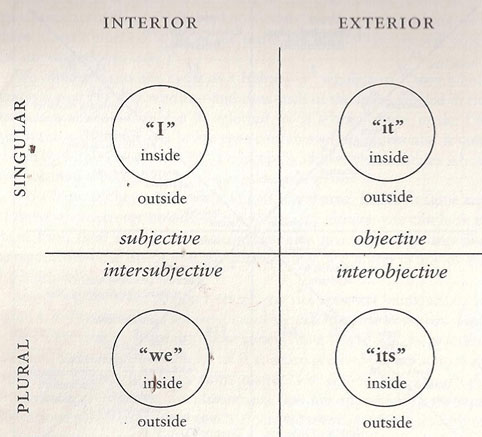
Critical mass for Integral will hit at ~2021.
On reaching the fabled tipping point of 10% of the population
Driven by testosterone
Structured Western approach integrating the meditative Eastern approach
Caveat: The observable universe is approximately 100 billion lightyears across with some 1080 atoms of observable matter (and five times more dark matter that remains currently unidentified by science).
Source: 3
|
| ||||||||||||||||||||
Personal avowals by Ken Wilber
► ⚡ Chogyam Trungpa (1939-1987) controversial Tibetan Buddhist meditation master, holder of both the Kagyu and Nyingma lineages, scholar, teacher, poet, artist, originator of a radical re-presentation of Shambhala vision9
► ⚡ Adi Da Samraj [Franklin Albert Jones; Da Free John] (1939-2008) controversial US American spiritual teacher, founder of the new religious movement Adidam, writer, artist10
► ⚡ Marc Gafni (*1960) controversial US American "spiritual teacher", serial sexual offender, former orthodox rabbi associated with the Jewish renewal movement, speaker, author11 / 12
Personal avowals
Unsettling account
Recommendation / Caveat
♦ ⚡ Chögyam Trungpa (1939-1987) – Exposed (1975-onwards13)
♦ ⚡ Adi Da [Da Free John] (1939-2008) – Exposed (1985-198614 / 15 / 16)
♦ ⚡ Genpo Roshi Dennis Merzel (*1944) – Exposed (1992/201117 / 18)
♦ ⚡ Robert Augustus Masters (*1947) – Exposed (1994/Feb 201419/Oct 201820)
♦ ⚡ Andrew Cohen (*1957) – Exposed (1997-201321)
(Pressed by five senior students, Cohen retreated from public office in June 2013. Both of his public apologies were soon to be removed.)
♦ ⚡ Marc Gafni (*1960) – Exposed (2004/2006/201122/201623)
♦ ⚡ Mahendra Kumar Trivedi (*1963) – Exposed (2010-2013)24 / 25 / 26
(Upon notice in 2013 Wilber acknowledged his premature judgement, deleted his endorsement newsletter Blog 637 dated June 2010 and asked Dr. Sawecki to have his name removed from the Trivedi Foundation website.27)
Categories yet to be identified by mental health professionals and forensic psychiatrists:
Serial enabling of predatory power holders / Devotional enabling
Reflexions on reading the One Taste diaries, 1999
| |||||||||||||||||||||||||||||||||||||||||||
| |||||||||||||||||||||||||||||||||||||||||||||
| Inspired by ► Ken Wilber, States, Stages, and the Three Kinds of Self, presented by the publication Integral Life, 16. September 2009 ► Corey W. deVos, US American webmaster of Integral Life, senior editor of KenWilber.com, writer ► Audio interview with Steve McIntosh stevemcintosh.com (*1960) US American lawyer, entrepreneur, founder and president of Now & Zen, activist, author of integral thought, host Carter Phipps, US American executive editor of the dissolved magazine EnlightenNext, journalist, author of Evolutionary Spirituality, YouTube film, posted 17. March 2012 ☛ Integral Consciousness: Stages of Development, part 1 of 2, 46:55 minutes duration ☛ Integral Consciousness: Stages of Development, part 2 of 2, 27:33 minutes duration |
| ||||||||||||||||||||||||||||||||||||||||||||||||||||||||||||||||||||||||||||||||||||||||||||||||||||||||||
| Sources: ► Deleted audio presentation by ⚡ Ken Wilber (*1949) US American transpersonal philosopher, consciousness researcher, thought leader of the 3rd millennium, developer of Integral Theory, author, Integral Education, directed to students of the John F. Kennedy University, sponsored by the publication Integral Life, 49 minutes duration, Denver, Colorado, April 2010 ► Video message by Marianne Williamson (*1952) US American spiritual teacher, political activist, visionary, lecturer, author, Are You Part of the 11%?, presented by the Institute of Noetic Sciences (IONS), DailyMotion film clip, 1:11 minutes duration, posted 18. October 2007 |
| See also: ► Consciousness-Tables and ► Passage from force driven controlling ego → self → power dwelling Self |
| Siehe auch: ► Spiral Dynamics Bewusstseinsskala – Ken Wilber (Terminologie / Farbgebung) |
|
|
|
| Sources featuring David Logan, Ph.D. TribalLeadership.net (*1968) US American professor of management, USC faculty member, consultant, author of Tribal Leadership ► Video presentation 'Tribal Leadership' by Dave Logan, John King, and Halee Fischer, presented by the online business magazine BNETvideo, YouTube film, 6:11 minutes duration, posted 27. October 2008 ► Video presentation Tribal leadership, presented by TEDx USC Talks, 16:39 minutes duration, filmed March 2009, posted October 2009 ► Audio interview (MP3) The Art of Tribal Leadership, presented by the publication Integral Life, dialogue partner ⚡ Ken Wilber (*1949), 48 minutes duration, June 2010 ► Video presentation Tribal Leadership, sponsored by the platform Google TechTalks, Google Campus, Mountain View, California, 53:24 minutes duration, filmed and posted 18. January 2011 |
|
A tribe/cluster is a group of 20-150 people. "Tribes" have more influence than teams, companies or CEOs in determining how much and what quality work gets done. The language used reveals the respective tribe.
Authentic leaders can move the group's center of gravity through language.
Leaders need to be able to talk all the levels so that you can touch every person in society. But you don't leave them where you found them. Tribes can only hear one level above and below where they are. [...] Leaders nudge people within their tribes to the next level. David Logan, Ph.D. TribalLeadership.net (*1968) US American professor of management, USC faculty member, consultant, author |
|
The greatest challenge we face is moving from stage 3 [pride] to stage 4 [courage]. David Logan, Ph.D. TribalLeadership.net (*1968) US American professor of management, USC faculty member, consultant, author
Comments on the hurdle between stages 3 ⇔ 4:
According to Ken Wilber 25% of the population are able to cognitively understand integral approaches, however, only 2% are able to incorporate and to sustain them. Comment: This coincides roughly with the statistical numbers David Logan found in his 10 year long study on tribes. [22% – Stage 4; 2% – Stage 5]
|
|
| Media reference: ► Video presentation by ⚡ Ken Wilber (*1949) US American transpersonal philosopher, consciousness researcher, thought leader of the 3rd millennium, author, On the Cutting Edge of Evolution, annual visit by students from the John F. Kennedy University (JFKU), Denver, Colorado, presented by the publication Integral Life, 40 minutes duration, issued May 2011 [Paraphrased] According to the developmental psychologists the tipping point, the critical mass of 10% of integral oriented population will be reached at around 2021. 1. Archaic (Survival) -------------------------0% 2. Tribal (Us against them) ----------------4% 3. Feudal (Me) ------------------------------15% 4. Traditional (Religion) -------------------40% 5. Modern (Science) -----------------------30% 6. Post-Modern (Pluralistic) -------------10% 7. 'Power of Now' (Spontaneous) -------1% |
| ||||||||||||||||||||||||||||||||||||||||||||||||||||||||||||||||||||||||||||||||
| Inspired by ► Notes Spiral Dynamics, presented by Don Edward Beck, Ph.D. (1937-2022) US American geopolitical management consultant, complex systems strategist, co-author, ~2004 ► Article Rezultata pretrage: The Future of the Human Race Revealed, presented by the publication Indigo Svijet, Owen Waters, 2. November 2010 |
| |||||||||||||||||||||||||||||||||||||||||||||||||||||||||||||
|
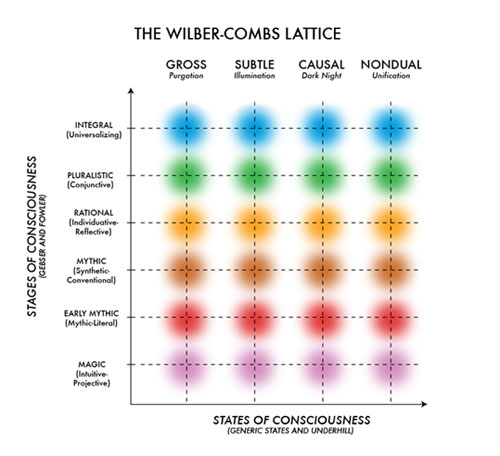
| ||||||||||||||||||||||||||||||||||||||||||||||||||||||||||||||||||||||||||||||||||
| See also: ► Consciousness-Tables |
| ||||||||||||||||||||||||||||||||||||||
| Source: ► Happiness rates according to ⚡ Dr. David R. Hawkins, Transcending the levels of consciousness, 2006 |
| See also: ► Consciousness-Tables and ► Scale of consciousness (Map) ► Stages and ► Quotes by various other sources on Hawkins' teachings |
| Siehe auch: ► Vier Entwicklunggsstadien des menschlichen Erlebens – ⚡ D. Hawkins ⇔ ⚡ K. Wilber |
| Book review by Ken Wilber on: ⚡ Dr. David R. Hawkins, Power vs. Force, 1995, 2002 |
| "Terrifically interesting ideas, but caught in subtle reductionism and the myth of the given. All the "hidden determinants" he mentions in the subtitle are monological instead of tetra-logical." ⚡ Ken Wilber, Integral Spirituality. A Startling New Role for Religion in the Modern and Postmodern World, S. 286, Shambhala Publications, Boulder, Colorado, 2006, reprint edition 13. November 2007 |
|
| |||||||||||||||||||||||||||||||||||||||||||||||||||||||||||||||||||||||||||||||||
| Source: ► Interview with ⚡ Ken Wilber, Shambhala, part III, presented by Shambhala Publications, Boulder, Colorado, undated |
| See also: ► Passage from force driven controlling ego → self → power dwelling Self |
| Siehe auch: ► Integrale Politik – ⚡ Ken Wilber |
|
What we are doing will always strongly relate to about less than 2% [Yellow/turquoise meme] of the population. […] Cognitively about 25% of the population [Green meme] will understand [integral politics] and often feel attracted to it. But we need people that are going to help us with that 2%. Video panel with ⚡ Ken Wilber Interpreting the Singularity, YouTube film, minute 10:49,
Now we're at a point where with approximately 5% of the population are at Integral we're waiting for that next 5% so that we have about 10% of the population at Integral. Some developmentalists feel that within about ten years [2021] we'll have about 10% of the population at Integral. Now that would be extraordinary because what happens when the leading edge of the population reaches 10% is there is a tipping point of massive change that goes through the culture. We are going to see integral values permeate this culture. Deleted audio presentation by ⚡ Ken Wilber (*1949) US American transpersonal philosopher, consciousness researcher, thought leader of the 3rd millennium, founder of Integral Theory, On the Cutting Edge of Evolution, presented by
Note: 50,000 people were essential to bring about the European Renaissance in the 14th to the 17th centuries.
Research studies show that around 5% of population has reached integral stages. [...] Tipping point: When around 10% of
Historically, major levels of development have been separated by hundreds to thousands of years, and taken that long to emerge. As for Integral consciousness, remember that
By contrast, the 40 years from the pluralistic [Green] to beginning Integral [Teal] is a lightning fast blink in evolutionary time. |
|
[Paraphrased] In the higher levels of consciousness it's easier to make major jumps. The lower levels may take a long time to move through. ⚡ Dr. David R. Hawkins, Sedona Seminar The Human Dilemma, 3 DVD set, 18. August 2007; confirming ⚡ Ken Wilber's view in respect to the capacity of evolutionary leaps within the different social strata |
| ||||||||||||||||||||||||||||||||||||||||||||||||||||||||||||||||||||||||||||||||||||||||||||||||||||||||||||
| Insight | "We've found that leaders who undertake a voyage of personal understanding and development can transform not only their own capabilities, but also those of their companies." Article by David Rooke, William R. Torbert, Ph.D., US American professor, Boston College's Carroll School of Management, Massachusetts, Seven Transformations of Leadership, presented by the bimonthly management magazine Harvard Business Review (HBR), published by Harvard Business Publishing, S. 1-9, April 2005 | |||||||
| Statistics | ➤ 55% of the leaders operate preconventionally, perform below the level of integrity. ➤ 30% of the leaders operate conventionally, perform above the level of integrity. ➤ 14% of the leaders have attained a post-conventional level. ➤ Less than 1% of the leaders operate at transpersonal stages. | |||||||
| Source: ► Article Transformation in Leadership, Part 1: A Developmental Study of Warren Buffett, presented by the Integral Leadership Review, Edward J. Kelly, ~2012 |
| Based on: ► Seven vertical action-logic stages of development (of mental complexity) – originator William R. Torbert, Ph.D., US American teacher, consultant, artist, author, 2004 ► Three orders of consciousness: Kegan's Stages of Adult Development: Self-Transforming or Interindividual Knowers [Socialized ◊ Self- authoring ◊ Self-transforming] – originator Robert Kegan, Ph.D. (*1946) US American developmental psychologist, professor of leadership studies and adult learning, Harvard University, co-director for the Change Leadership Group, author, 1994, 25. June 2018 |
| Reference: ► Robert Kegan, Ph.D. (*1946) US American developmental psychologist, professor of leadership studies and adult learning, Harvard University, co-director for the Change Leadership Group, author, The Evolving Self. Problem and Process in Human Development, Harvard University Press, 1982, reprint edition 1. July 1983 |
| See also: ► Leadership and ► Hermes Trismegistos and ► Step models ► Chakra system and ► Chakras – Alchemical process |
| ||||||||||||||||||||||||||||||||||||||||||||||||||||||||||||||||||||||||||||
| Source: ► Article by Robb Smith, US American social entrepreneur, co-founder of Integral Life and Chrysallis, The 10 Shapes of Mind. The Hidden Forces of Consciousness Driving Our Thoughts, Our Lives and Our World, presented by the publication Integral Life, 17. June 2015 |
|
| Source: ► Article The Many Dimensions of Change, presented by the publication Kosmos Journal, Don Edward Beck, Ph.D. (1937-2022) US American geopolitical management consultant, complex systems strategist, co-author, spring-summer 2009 |
|
| Originator: ► Don Edward Beck, Ph.D. (1937-2022) US American geopolitical management consultant, complex systems strategist, co-author |
| Inspired by: ► Blog entry 3 Models of Consciousness, presented by Shark Free Waters, Amanda Boardman, 3. January 2013 |
|
| Source: ► Video presentation by Don Edward Beck, Ph.D. (1937-2022) US American geopolitical management consultant, complex systems strategist, co-author, Don Beck: In Quest of the Master Code. Revealing the 'DNA' that shapes human cultures and creates political and religious systems (and Tea Parties and OWS), sponsored by The Inside Edge, Irvine, California, recorded 7. December 2011, YouTube film, 53:29 minutes duration, posted 12. February 2012 |
|
| |||||||||||||||||||||||||||||||||||||||||||||||||||||||||||
|
| Sources: ► Book Arthur Oncken Lovejoy (1873-1962) German US American philosopher, intellectual, historian, The Great Chain of Being. A Study of the History of an Idea, Harvard University Press, new edition August 1972 ► Article ⚡ Ken Wilber [LoC 490] (*1949) US American transpersonal philosopher, consciousness researcher, thought leader of the 3rd millennium, developer of Integral Theory, author, An Integral Theory of Consciousness, presented by the British Journal of Consciousness Studies, issue 4 (1), S. 71-92, February 1997 ► Blog article Truth, Beauty, and Goodness: Integral Theory of Ken Wilber, Mayank Chaturvedi, 24. July 2016 |
| References: en.Wikipedia entries ► Great chain of being and ► History of ideas |
| Referenz: de.Wikipedia-Eintrag ► Geistesgeschichte |
| See also: ► Being and ► Consciousness |
|
| |||||||||||||||||||||||||||||||||||||
|
|
| ||||||||||||||||||||||||||||||||||||||||||||||||||||||||||||||||||||||||||||||||||||||||||
| |||||||||||||||||||||||||||||||||||||||||||||||||||||||||||||
| ||||||||||||||||||||||||||||||||||||||||||||||||||||||
|

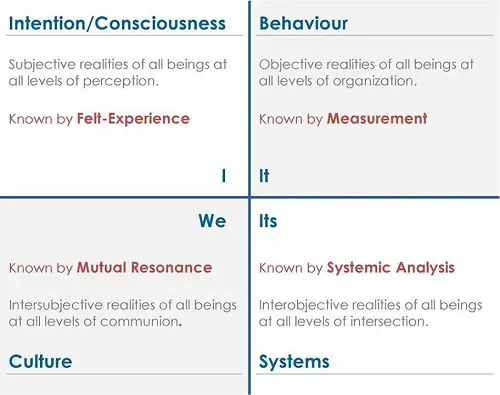
| Written sources: ► Article by Sean Esbjorn-Hargens, Ph.D., An Overview of Integral Theory, presented by the publication integraleuropeanconference. com, Resource Paper No. 1, S. 1-241. March 2009 ► Deleted article Sex, Zen, and Whole Leadership, presented by the publication Integral Life, Integral Post, Dr. Ginny Whitelaw, US American leadership expert, Zen master (roshi) in the Chozen-ji line of Rinzai Zen, 16. April 2013 |
| See also: ► Four-stage composition of ancient Egyptian temples – Model of mystery schools ► From conception to birth – Stanislav Grof ► Life stages: Athlete ♦ Warrior ♦ Statement ♦ Spirit ► Historic cycles – From the love of domination to the power of love – Anodea Judith |
| ||||||||||||||||||||||||||||||||||||||||||||||||||||||||||||||||||||||||
| Sources: ► Video animation, music and data An Introduction To Soul Ages, updated version, YouTube film, 6:32 minutes duration, posted 26. October 2008 ► Book: Chelsea Quinn Yarbro (1942-2025) Finnish Italian US American novelist, author, Messages from Michael – The Michael Teachings, channeled in the early 1970s, first published 1979, new edition March 2005 ► Excerpt: Joya Pope, author of The World According to Michael, Emerald Wave, 1992, Soul Age. Charting the Reincarnational Journey Through the Seven Soul Ages, presented by the publication "The Michael Teachings", undated |
| See also: ► Evolution |
Links zum Thema Ken WilberLiteratur von Ken Wilber (und Mitautoren)Ken Wilber (*1949) US-amerikanischer Philosoph, Vordenker des 3. Jtds., transpersonaler Bewusstseinsforscher, Entwickler der Inte-
Globale Darstellung der Entwicklung des menschlichen Bewusstseins in den verschiedenen Kulturen; Entwicklungsstufen des Individuums in verschiedenen Altersstufen
Eine radikale Perspektive, in der Gott eine neue Bedeutung bekommt.
Literatur
Buch über die Geschichte, Gegenwart und Zukunft der menschlichen Kultur
Literature (engl.) of Ken Wilber (and co-authors)Ken Wilber (*1949) US American transpersonal philosopher, consciousness researcher, thought leader of the 3rd millennium, developer of Integral Theory, author
⚡ Critical literature (engl.) on Ken Wilber
⚑ Appendix II "On Ken Wilber, Ex-Rabbi Marc Gafni, and Integral Blindness – Ken Wilber, Marc Gafni
⚑ Appendix IV. Bald Narcisslsm: The Dis-Integration Of Ken Wilber
Literature (engl.)
Externe Weblinks
Präkonventionelle Phase (Respektlosigkeit) Konventionsphase (Verehrung) Trans-konventionelle Phase (Respekt)
Graphiken External web links (engl./German)
SpiralDynamic Links
Mindmap "Integral", Quadranten-Perspektiven, Spiral Dynamics (SD) - Graves Modell, Linien – Ströme, Intelligenzen, Typ-Perspektiven, Zustands-Perspektiven, Übersichten: Quadrantenmodell und Spiral Dynamics, Beschreibungen von Ken Wilber
Zwölf Bewusstseinsstufen und ihr Zusammenhang mit Raum/Zeit und Holongrenzen; zwölf-dimensional erweiterte einheitliche Quantenfeldtheorie von Burkhard Heim
Einteiliges integrales Modell (3-dimensionale Darstellung) über den direkten Zusammenhang von Stufen, Zuständen, Linien, Quadranten und Enneagrammtypen
Einteiliges integrales Modell (2-dimensionale Darstellung) über den direkten Zusammenhang von Stufen, Zuständen, Linien, Quadranten und Enneagrammtypen
Vereinheitlichte integrale Bewusstseins-Modelle IPP und IPT anhand des fünfteiligen AQAL-Modells von Ken Wilber
Linkless articles
External web links (engl.)
The Shadow Series
Charts / Lists
One-piece integral consciousness models IPP and IPT based on the five-parted AQAL model by Ken Wilber
One-piece integral model (3-dimensional presentation) about the direct relation of levels, states, lines, quadrants and enneagram types
One-piece integral model (2-dimensional presentation) about the direct relation of levels, states, lines, quadrants and enneagram types
Twelve levels of consciousness and their relation to space/time, holon borders and the 12 dimensional expanded unified quantum field theory by Burkhard Heim
⚡ Critical web links (engl.) on Ken Wilber and the IT movementCritique on Ken Wilber and the evolution of the 'Wilber' movement
Blog articles by kheper.net, Michel Bauwens (*1958) Belgian director and founder of the P2P Foundation, peer-to-peer theorist, conference speaker on technology, culture and business innovation, researcher, writer
Blogspot articles by worldwidehappiness.blogspot.de, Martin Gifford
Critical essays by Martin Erdmann (*1941) Polish German interpreter and translator, lecturer at University of Heidelberg, cofounder
Bodhisattva Wilber and his critics' eye-sockets
The myth of an ego
Wilberland – The Home Country of Ego Superman Looking through integral conventions to see them disintegrate The perplexing nature of consciousness How A Theory of Everything in its absoluteness dissolves in itself
Endorsing and disendorsing gurus
Deconstructing Wilber protege-buddy-handler Marc Gafni
Ohad Ezrahi [Marc Gafni’s friend and co-author] speaks explicitly about Shabbatai Zevi and his follower Yaacov Frank as a model. But apparently the others are also persuaded to follow this course, even without explicitly championing it. In truth, all those who ignore moral distortion in the name of spiritual exaltation are active partners in this worldview.
Developing a new school of Jewish thought (to be called "The School of Personal Myth", expelled! Rabbi and neo-Sabbatean Marc Gafni is reformulating and extending the core constructs of Post-Lurianic thought in a modern Neo-Hasidic context.
Appraisals from Ken Wilber, Zach Stein, Sally Kempton, Richard Mann, Ph.D. for Gafni's 2 volume book set "Radical Kabbalah", 20. August 2012
NOTE: Direct access to the article has been thwarted.
Endorsement by Ken Wilber: "… the superb work of […] Marc Gafni on a "World Spirituality Based on Integral Principles," such as his "Radical Kabbalah"; … pg. 510
The charges by which the Buddhist Tribunal on Human Rights is accusing "Ken Wilber" are:
"As soon as you make a hierarchy of human development and put yourself at the top of that hierarchy, you open yourself up to elitism, narcissism, spiritual pride and toxic dominator hierarchies."
Web links on Ken Wilber promoting and backing cult leaders – QuoraQ&A contributions issued by Elfriede Ammann, presented on the Californian question-and-answer website Quora EN
Audio- und Videolinks
Veranschaulichung der Bewusstseins- und Entwicklungsstufen von Spiral Dynamics
Audio and video links (engl.) – Ken Wilber
On the technology ideas of ⚡ Ray Kurzweil (*1948) US American computer scientist, inventor, futurist, director of engineering at Google, author on transhumanism and technological singularity
Ken Wilber: How to Stage a 2nd-Tier Protest Minute 05:50
On the nature of "I amness" or the pure "Self", ultimate identity
"You have to develop the ego before you can transcend it. You have to be somebody before you can be nobody." Minute 5:42
"Categorically not. I don’t know more confusion in the last thirty years than has come from quantum physics."
Linkless media offerings
According to the developmental psychologists the tipping point, the critical mass of 10% of integral oriented population will be reached at around 2021.
⚡Critical audio and video links (engl.) on the Integral Movement
⚡Exposing the predation of Wilber protege and associate Marc Gafni
Audio and video links (engl.) – Clare Graves and other presenters
|
Englisch Wiki
Hawkins
1 Article Minority rules: Scientists discover tipping point for the spread of ideas, presented by the science, research and technology news aggregator Phys.org, 25. July 2011 ⇑
2 Article Minority rules: Scientists discover tipping point for the spread of ideas, presented by the science, research and technology news aggregator Phys.org, 25. July 2011 ⇑
3 Article by John Carl Villanueva, "How Many Atoms Are There in the Universe?", presented by publication universetoday, 30. July 2009 ⇑
4 Ref.: David Bohm and F.D. Peat, Science, Order, and Creativity, Bantam Books, 1987 ⇑
5 Article by Ken Wilber, An integral theory of consciousness, presented in the Journal of Consciousness Studies, 4, S. 71-92, 1997 ⇑
6 Amy and Ken had grown apart. ⇑
7 Ken Wilber, Grace and Grit, Shambhala Publications, Boulder, Colorado, 1991 ⇑
8 Marci Walters wanted to have children which Ken Wilber denied. ⇑
9 Book reference: Geoffrey D. Falk, US American author, Stripping the Gurus. Sex, Violence, Abuse and Enlightenment, chapter XVII A Wild And Crazy Wisdom Guy (Chögyam Trungpa), Million Monkeys Press, 1. February 2009 ⇑
10 Book reference: Geoffrey D. Falk, US American author, Stripping the Gurus. Sex, Violence, Abuse and Enlightenment, chapter XX DA Avatar, DA Bomb, DA Bum, Million Monkeys Press, 1. February 2009 ⇑
11 Article Marc Gafni, Again, presented by the weekly newspaper serving the New York City the Jewish community The Jewish Week, The RosenBlog, Gary Rosenblatt, 14. September 2011 ⇑
12 Megathread on Facebook, Integral Global, exposing Marc Gafni et al., January 2016 ⇑
13 Book reference: Geoffrey D. Falk, US American author, Stripping the Gurus. Sex, Violence, Abuse and Enlightenment, chapter XVII A Wild And Crazy Wisdom Guy (Chögyam Trungpa), Million Monkeys Press, 1. February 2009 ⇑
14 Book reference: Geoffrey D. Falk, US American author, Stripping the Gurus. Sex, Violence, Abuse and Enlightenment, chapter XX DA Avatar, DA Bomb, DA Bum, Million Monkeys Press, 1. February 2009 ⇑
15 Essay by Dr. David Lane, The Paradox of Da Free John, written in 1985, included in Da. The Strange Case of Franklin Jones, 1996, reissued by the online publication integralworld.net, 24. May 2015 ⇑
16 Blog article by Timothy Conway, Ph.D., Adi Da and His Voracious, Abusive Personality Cult, presented by the publication Enlightened Spirituality, 2007 ⇑
17 Article Disrobing Genpo. Famous Zen Master Genpo Roshi has announced that he is disrobing., presented by the US American Elephant Journal, Brad Werner, 9. February 2011 ⇑
18 Archived article Zen teachers are livid Utah colleague in sex scandal still teaching. Schism • Colleagues call on founder to step away., presented by the US American daily newspaper The Salt Lake Tribune, Kristen Moulton, 10. May 2011 ⇑
19 Retrieved BATGAP comments on the unredeemed past of cult leader Masters (Jan-March 2014 ◊ 2017) ff ⇑
20 Blog article by Be Scofield, Spiritual Bypassing Guru Robert Augustus Masters Was an Abusive Cult Leader, Medium, 2. October 2018, reissued by Gurumag,
15. December 2018 ⇑
21 ⚡ Critical quotes on Andrew Cohen from various other sources ⇑
22 Article Marc Gafni, Again, presented by the weekly newspaper serving the New York City the Jewish community The Jewish Week, The RosenBlog, Gary Rosenblatt, 14. September 2011 ⇑
23 Megathread on Facebook, Integral Global, exposing Marc Gafni et al., January 2016 ⇑
24 Blog article Has Ken Wilber jumped the shark?, presented by headthegong.com, Bob, 23. June 2010 ⇑
25 Blog article What's Up with Ken Wilber?, presented by Integral Options Cafe, William Harryman, 25. June 2010 ⇑
26 Article by Andrew P. Smith, We All Wanna Change The World. A Scientific Analysis of the Claims of Mahendra Kumar Trivedi, first published July 2010, reissued by the online publication integralworld.net, 22. January 2014 ⇑
27 Ken Wilber Speaks Out – About Mahendra Kumar Trivedi, presented by trivedifoundationvictims.wordpress, 22. February 2014 ⇑
28 Video presentation (exposure) by Donna Zerner, US American storyteller, The Shadow Behind The Light, presented by Urban Tellers, Portland Story Theater, 14. May 2016, YouTube film, 15:35 minutes duration, posted 19. May 2016 ⇑
29 English Wikipedia deleted entry. ⇑
30 Chip Conley and Eric Friedenwald-Fishman, Marketing That Matters. 10 Practices to Profit Your Business and Change the World, Social Venture Network, Berrett-Koehler Publishers, 1st edition 1. October 2006 ⇑
31 English Wikipedia deleted entry. ⇑
32 See here: Spiral Dynamics – Correlation and Terminology according to Wilber ⇑
33 English Wikipedia deleted entry. ⇑
34 English Wikipedia deleted entry. ⇑